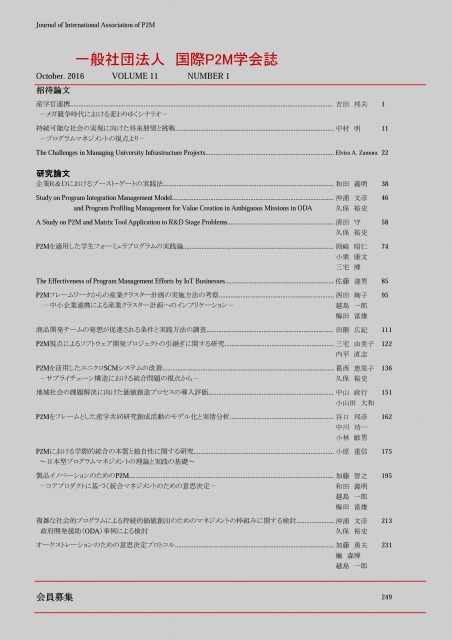Volume 7, Issue 2
Displaying 1-14 of 14 articles from this issue
- |<
- <
- 1
- >
- >|
-
Article type: Cover
2013 Volume 7 Issue 2 Pages Cover1-
Published: February 25, 2013
Released on J-STAGE: May 25, 2017
Download PDF (33592K) -
Article type: Cover
2013 Volume 7 Issue 2 Pages Cover2-
Published: February 25, 2013
Released on J-STAGE: May 25, 2017
Download PDF (33592K) -
Article type: Index
2013 Volume 7 Issue 2 Pages Toc1-
Published: February 25, 2013
Released on J-STAGE: May 25, 2017
Download PDF (34K) -
Article type: Article
2013 Volume 7 Issue 2 Pages 1-20
Published: February 25, 2013
Released on J-STAGE: May 25, 2017
Download PDF (2343K) -
Article type: Article
2013 Volume 7 Issue 2 Pages 21-37
Published: February 25, 2013
Released on J-STAGE: May 25, 2017
Download PDF (2107K) -
Article type: Article
2013 Volume 7 Issue 2 Pages 39-51
Published: February 25, 2013
Released on J-STAGE: May 25, 2017
Download PDF (1318K) -
Article type: Article
2013 Volume 7 Issue 2 Pages 53-74
Published: February 25, 2013
Released on J-STAGE: May 25, 2017
Download PDF (2110K) -
Article type: Article
2013 Volume 7 Issue 2 Pages 75-85
Published: February 25, 2013
Released on J-STAGE: May 25, 2017
Download PDF (1208K) -
Article type: Article
2013 Volume 7 Issue 2 Pages 87-99
Published: February 25, 2013
Released on J-STAGE: May 25, 2017
Download PDF (3451K) -
Article type: Article
2013 Volume 7 Issue 2 Pages 101-112
Published: February 25, 2013
Released on J-STAGE: May 25, 2017
Download PDF (1206K) -
Article type: Article
2013 Volume 7 Issue 2 Pages 113-127
Published: February 25, 2013
Released on J-STAGE: May 25, 2017
Download PDF (8629K) -
Article type: Appendix
2013 Volume 7 Issue 2 Pages 129-130
Published: February 25, 2013
Released on J-STAGE: May 25, 2017
Download PDF (97K) -
Article type: Appendix
2013 Volume 7 Issue 2 Pages App1-
Published: February 25, 2013
Released on J-STAGE: May 25, 2017
Download PDF (31K) -
Article type: Cover
2013 Volume 7 Issue 2 Pages Cover3-
Published: February 25, 2013
Released on J-STAGE: May 25, 2017
Download PDF (2009K)
- |<
- <
- 1
- >
- >|
